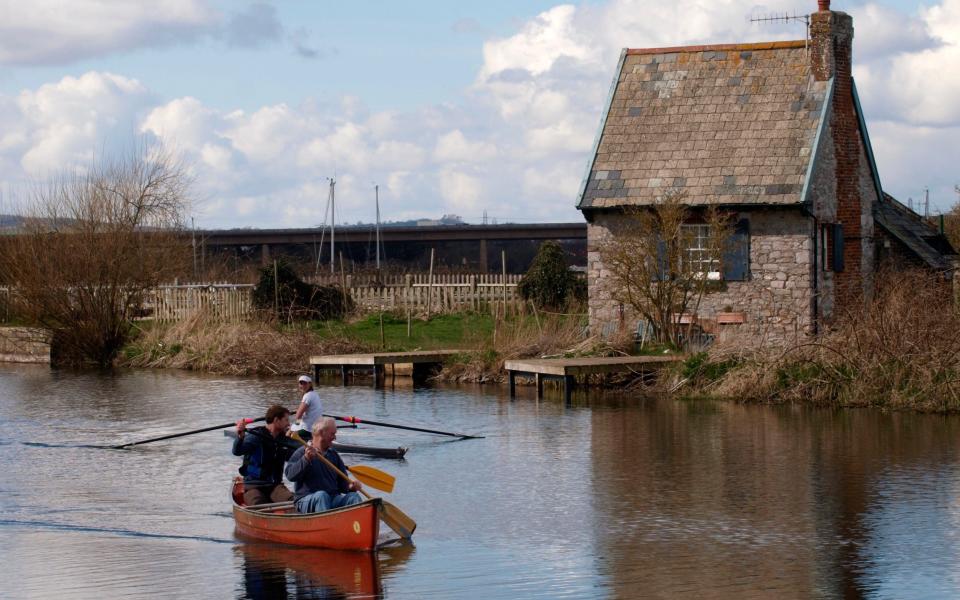In praise of the UK’s greenest city

It was a halcyon moment. I was happily supping a pint of ale on the sloping lawn of St David’s Hill one evening in summer. Granted, the Imperial is a Wetherspoon pub, but what a building and what a beer garden.
Then, as the sun began to disappear, I glanced over to the right and saw students and local people walking and running beneath some tall trees on the university campus, silhouetted against the oranges and fiery reds. I scanned the horizon and all around were similar hills and patches of park, church steeples and verdant valleys. For the first time, really, in perhaps three years of living close to the city, I “got” Exeter.
My impression wasn’t the result of a brain-fuzzing IPA. According to a new in-depth survey conducted by the University of Sheffield, Exeter’s city centre is the “greenest” in Britain. Scientists ranked cities around the country and – surprise, surprise – found that many of the greener cities were located in the south of England. Exeter, which boasts more than a dozen public parks, lots of playing fields, several much-loved and distinctive “valley” parks, pretty squares and tree-filled spaces came top of 68 conurbations with populations of at least 10,000.
But parks and tree cover don’t fully reveal the whole green truth about this somewhat overlooked city. Take a look at Devon Wildlife Trust’s detailed map and you’ll see Exeter abounds in important habitats and biodiversity sanctuaries. One way to explore the natural attractions is to walk the Exeter Green Circle, a 12-mile route that runs around the city linking many of its leafy spaces together.
Beyond this hitherto undeclared secret greenery, Exeter offers other delights – known to locals but largely missed by Devon-loving tourists who are usually in a hurry to get to Dartmouth or Salcombe or the north coast resort towns.

To kick off, there’s great coffee and pastries at The Exploding Bakery beside Exeter Central. To fill up, the Fat Pig is a beautiful backstreet boozer serving scrumptious dishes such as pork faggots and mussels in cider. There are lots of little Asian restaurants that target the undergraduate market; Kin Khao Café is cheap and very cheerful. The City Gate is a fine, refurbished Young’s pub with a smart hotel. The Angel is a cool, grungy and warm-hearted bar.
The destruction by fire in October 2016 of the Royal Clarence Hotel – once described as England’s oldest – was a terrible blow to Exeter. The Cathedral Green has yet to recover from its loss. Sadly, the current plan is to recreate the old façade but use the space for apartments rather than a new hotel. But the magnificent Gothic cathedral is still very much there in all its glory. Entry is £7.50 but for that you get to admire the ancient misericords, an astronomical clock, the minstrels’ gallery and the longest medieval stone vaulted ceiling in the world.
Ideal for families, the Royal Albert Memorial Museum is a considered collection of art, local history and science-oriented displays, all arranged in a lovely building. Arts-wise, Exeter is not amazing, but musicals, plays, pantos and, occasionally, operas are staged at the Northcott. I saw the Buzzcocks and Thurston Moore at Exeter Phoenix, a small but very creative arts complex. When it comes to shopping, chains dominate here as elsewhere, but Fore Street in the old West Quarter has lots of indy stores.
But, who comes to Exeter for retail? The city’s finest attractions are all those green spaces, made even more enjoyable when combined with the local waterways. A bike ride down the Exe to Topsham or Exmouth is highly recommended, as is a paddle along the canal – kayaking under the M5 feels weirdly special. Saddles and Paddles rents out bikes, canoes and kayaks.

Of course, Exeter is close to some very famous wilderness. Dartmoor is well within reach, and the newly reinstated train service to Okehampton means you can visit town and country without a car. On the other side is Lyme Regis and the famously dry, sunny climate of East Devon. The city, on the GWR and several flight routes, is amazingly well connected.
I must confess, it did take me some time to come round to Exeter. Those born locally seemed loath to sing its praises. The modern architecture in the centre can make you forget the old and the bucolic around its edges. Based in Totnes, I spent a lot of my leisure time at the South Hams beaches, on hikes around Ivybridge, or exploring Plymouth – the “other” city in my neighbourhood, and appealing thanks to its maritime heritage and sublime coastal views.
But Exeter deserves its moment – and it would be great if the green garland earns it some attention from domestic travellers. Remember how, at the height of Partygate, there was near-universal clamour for a boring, honest, hardworking PM? Well Exeter is perhaps a bit like that. You can keep your “buzzing” Manchesters and Newcastles, your “happening” Hebden Bridge and your “gritty” Glasgow. Exeter is an ecclesiastical and scholars’ city, a calm and relaxed town-sized metropolis to visit, a green and healthy place to live.
We have, arguably, all tended to overrate many places because of food, drink, “sights” and consumer fixes; one day, the gold standard will probably be clean air and open spaces. Old Exeter suddenly seems almost futuristic.
For ideas on where to stay, see our guide to the best hotels in Exeter


